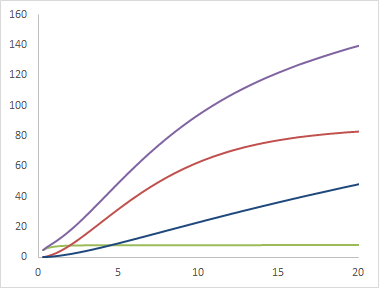Here are the velocity components of the Milky Way (according to Sofue et al. 2013) out to 20 kpc. The vertical axis is $k$ $s^{-1}$. The horizontal axis is $kpc$.
The purple line is the rotation curve of all the components. The green line is the contribution from the bulge, the red is the contribution from the disk and the blue is the contribution from Dark Matter. Here is the mass of each of those components (in $10^9$ solar masses):
Notice that the Dark Matter basically forms a hollow sphere. There's no Dark Matter in the core where you'd expect it to be and it increases steadily to 20 kpc and beyond. Every other gas we know clumps. Gravitating matter obeys the Seric profile. What physical explanation does Dark Matter have for not collecting in the core of the sphere?


